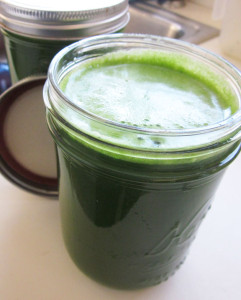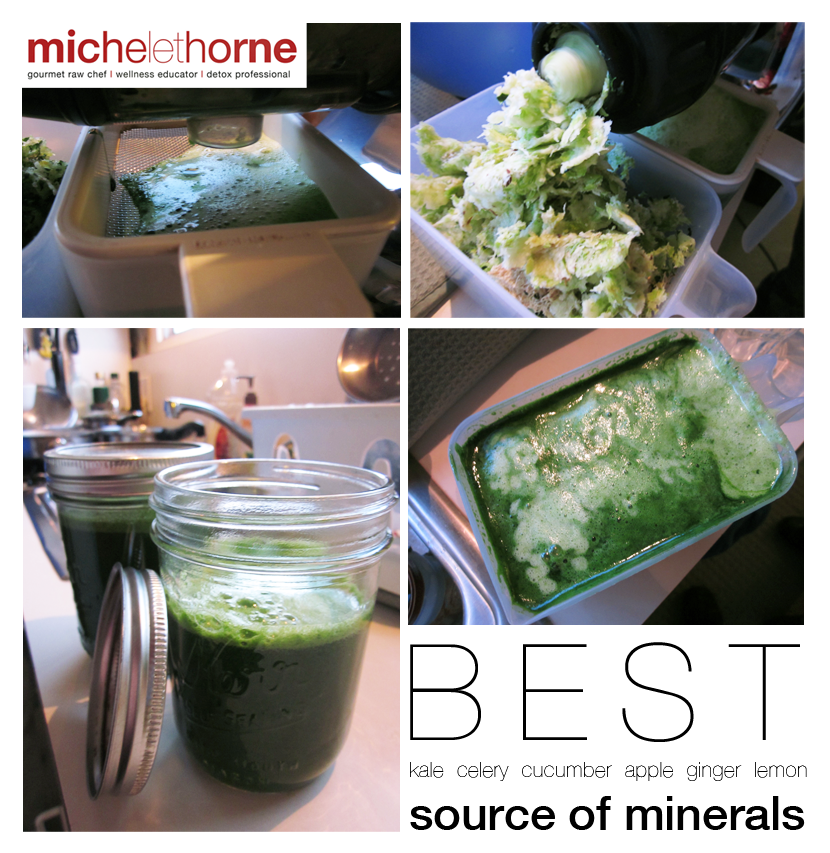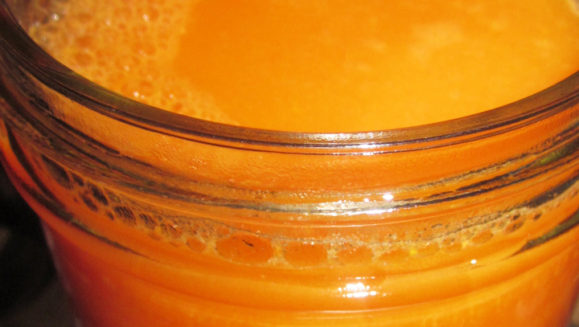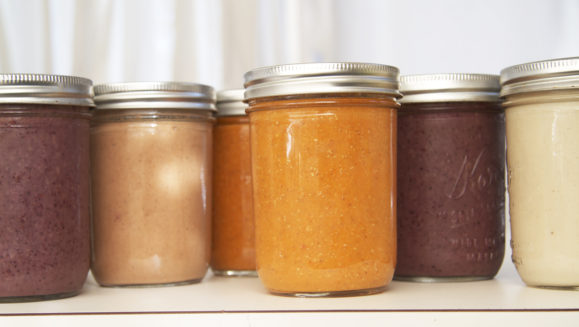 Makes 32 ounces. Make sure to use organic produce, because you don’t want to be drinking toxic chemicals and pesticides. Oh, and leave the skins on all the fruit (including the cucumbers), that’s where the pectin and phytonutrients live and you definitely want those nutrients.
Makes 32 ounces. Make sure to use organic produce, because you don’t want to be drinking toxic chemicals and pesticides. Oh, and leave the skins on all the fruit (including the cucumbers), that’s where the pectin and phytonutrients live and you definitely want those nutrients.
2-15 whole leaves of organic lacinato kale
6-8 organic celery stalks
1 organic cucumber, whole
3-4 organic granny smith apples, with seeds
1/4 organic lemon wedge (with peel)
1 T organic ginger (sliced)
BUSY PEOPLE TIP : Wash and prep your veggies the night before, keep them in an air tight glass container in the fridge. Or, if you’re up late preparing and want to just run out the door in the morning, use your juice press to juice everything and immediately seal place your juices (in glass containers) into the freezer. Once you remove them from the freezer on your way out the door, they will remain fresh and cold after sitting at room temperature for an hour or so.
UPCYCLE TIP : If you juice the kale first, you can save some of the pulp. That’s where most of the fiber will be, and you can use the pulp from the kale juice, add some hemp seeds, mineral salt, lemon, a dash of olive oil and a pinch of cayenne pepper. Mix together and dehydrate on a low temperature for 10-12 hours for a crunchy snack or salad topping.
RECYCLE TIP : Grow your own in your back yard garden, pot or windowsill bed. That way, you can control what goes into the soil, water and ultimately, your tummy! Left over kale ribs can be composted with other food waste or composted for worms.
NUTRITION TIP : Kale is abundant in vitamins including but not limited to antioxidant vitamins A, C, K and minerals like calcium, iron, manganese, copper and potassium.
BOTANY INFO : (Acephala Group – ornamental) Kale is like a nonheading Cabbage and differs slightly from Collards in appearance and taste. Most kale varieties have upright, green to deep blue-green leaves with fringed or wavy edges and long petioles. 1 There are several varieties, including green (curly), lacinato (dinosaur) and purple kale. It’s a hearty vegetable that can easily grow in most moderate climates – all year round.
Sources :
1. http://www.botany.com/brassica.html


